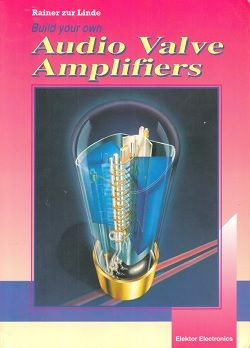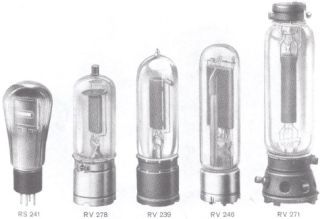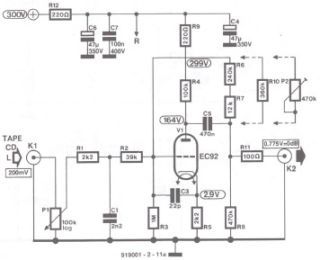
Rainer zur Linde,
Build your own audio valve amplifiers
Circuits for hi-fi and musical instruments
Elector Electronics (Publishing) P.O. Box 1414 Dorchester England DT2 8YH,
First Published in the United Kingdom 1995, This Edition September, 1997
Contents
Introduction
To most people working in electronics, the thermionic valve or electron tube is history. Indeed, few of us would be content nowadays without the ease of use, the technical quality, the low weight and the small dimensions of transistorized or integrated electronic equipment. None the less, for many hi-fi enthusiasts and musicians, a valve amplifier still forms the nucleus of their audio equipment. The combination of modern high-quality peripheral equipment (signal sources, loudspeakers) and a classical valve amplifier to come into their own as far as tonal quality is concerned. In modern hi-fi valve amplifiers much attention is paid to obtaining a signal transfer that is as nearly linear as possible. This obviates the need of complex tone control, which is the past were necessary to mask the deficiencies of signal sources then available. For instance, a CD player does not produce stylus noise which, when the audio was young, was combatted by chopping off the higher frequencies so as to obtain an acceptable sound quality (which modern listeners would not tolerate).
Whether it is nostalgia, interest in the technical parameters, the appeal of a gleaming amplifier chassis with softly glowing valves, respect for the technical know-how of earlier generation, or perhaps the firm conviction that the sound of a valve amplifier can not be bettered, it is a fact that this technical tradition, which deserves a place of honour in any science museum, is still in demand. It is particularly gratifying that many of the younger generation admire valve amplifiers. Perhaps this is due to the popularity of the electric guitar.
The field of the thermionic valve is extensive, shown by the enormous amount of literature it attracted in the 1960s.
This book is intended for a broad cross-secion of the public: apart from projects for preamplifiers, power amplifiers, and two amplifiers for musical instruments, aimed at the practical audio/hi-fi enthusiast, it offers much information on the operation od electron tubes, while the first chapter gives a short history of the thermionic valve.
- Part 1. GENERAL
- Chapter 1 - History of the thermionic valve (1)

- Chapter 2 - Operation of the electron tube (39)
- Chapter 1 - History of the thermionic valve (1)
- Part 2. Hi-Fi CIRCUITS
- Wiring tube circuits (69)
- Chapter 3 - CD/line amplifier (71)
- Chapter 4 - Hi-fi preamplifier (95)
- Chapter 5- General-purpose line amplifier (109)

- Chapter 6- Pick-up/line amplifier with SRPP output (115)
- Chapter 7 - Hi-fi output amplifier with 2xEL34 (121)
- Chapter 8 - Class A stereo output amplifier with 2xKT88 (125)
- Chapter 9 - Miscellaneous output amplifiers (141)
- Stereo output amplifier with 2A3 (141)
- Single-ended output stage with 6L6GC as triode (145)
- Output amplifier with EL34 as triode (147)
- Output amplifier with direct-coupled 6V6GT (150)
- Push-pull output amplifier with 2x6V6GT (152)
- Push-pull output amplifier with 2xEL84 (154)
- Push-pull stereo amplifier with 4xECL82 (156)
- Push-pull output amplifier with 2xEL34 (159)
- Push-pull output amplifier with 2x6L6GC (161)
- Part 3. AMPLIFIER FOR MUSICAL INSTRUMENTS
- General (165)
- Guitar/keyboard amplifier (171)
- Guitar amplifier with transistor input (175)
- Part 4. POWER SUPPLIES
- General (193)
- Voltage regulation with valves (199)
- Heater-voltage supplies (213)
- Appendix A: SRPP amplifier for CD players (219)
- Appendix B: Track layouts of PCBs (225)




